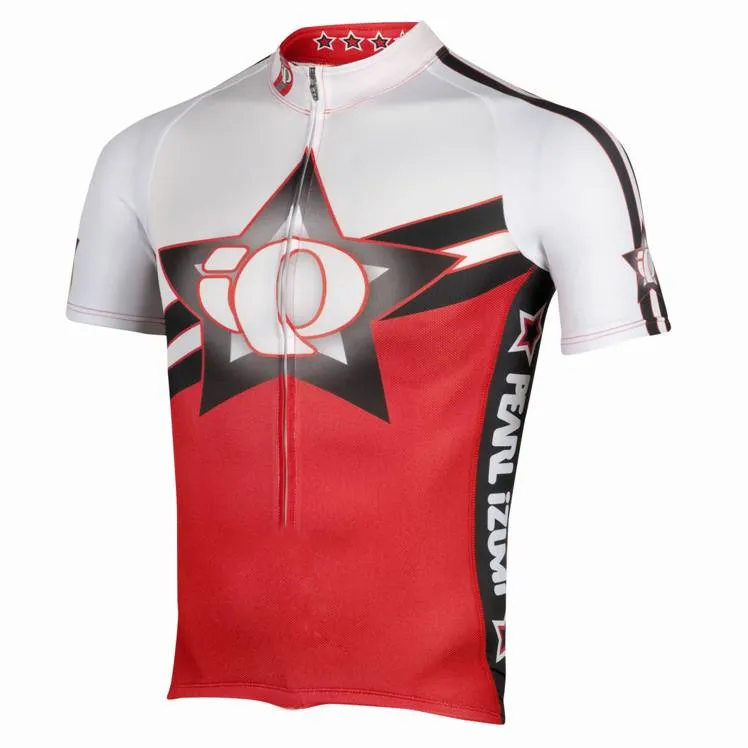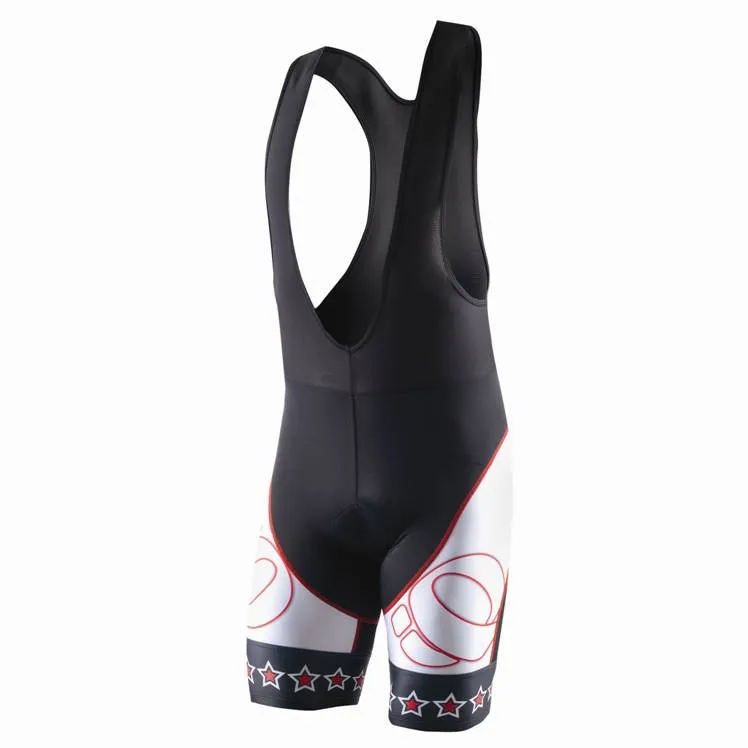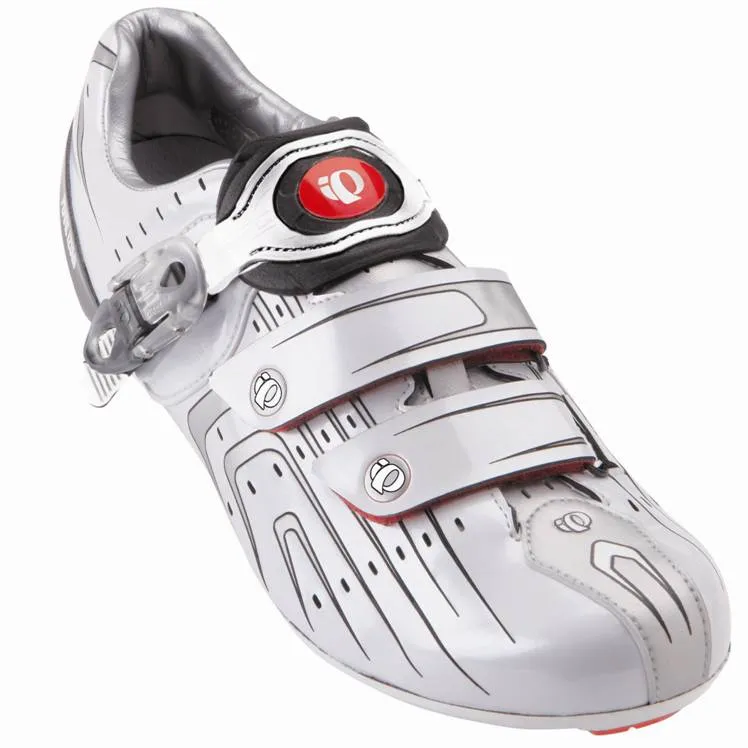Cycle clothing company Pearl Izumi’s spring 2010 line will be the culmination of two years that have seen the company changed by forces both external and internal.
The public change was Shimano’s $69.5 million purchase of Pearl from the fitness company Nautilus – they of the Stairmaster machines and Bowflex home gyms – in February 2008.
The internal changes started a couple of months before that, with the hiring of snowboard-industry veteran Peter Curran as the product manager for men’s cycling.
With the hiring of Curran – who spent 10 years at Burton Snowboards developing product with and for their pro riders – and the subsequent sponsorship of the Garmin-Slipstream team, Pearl took direct aim at the high-end, core rider.
John Bradley spoke with Curran at the company’s US headquarters outside of Boulder, Colorado for a look at what Pearl have in store.
You’re in your second year on staff, so we’re just starting to see what you’ve been working on...
Yeah. When I came in, fall ’08 was just coming out. I had nothing to do with that. Spring ’09 was not really mine. I was able to affect some changes in the fall ’09 line. But spring 2010 is really the first line that’s top-to-bottom my involvement.
Were you tasked with reinventing Pearl?
It was a period of transition. There had been some turnover in our department, and there was definitely a feeling among dealers that the product was getting a little stale. For example, the staple Pearl Izumi black shorts are a great piece but people weren’t really looking at the other aspects of the line. So my marching orders were to broaden the line beyond just the core black shorts.
That seems to be happening mostly at the high end...
You have to break big tasks down into little pieces. You can’t change the entire line all at once. I’ve learned through past experience that brand image is dictated by the top of the line. So that’s where we focused most of our energy – our top-of-the-line Pro category.
If we had decided to redo the line starting with our bread-and-butter product, $75 jerseys or whatever, we would have sent a very different message. We might have cemented this image in everyone’s mind that Pearl is the Toyota Camry of the cycling world.
Pro doesn’t turn the lights on, for sure, but we decided that if we were going to overhaul the brand, we would start there.

The PRO LTD jersey boasts the same fit and materials as Garmin-Slipstream's tops
Has the sponsorship of Garmin-Slipstream played into this?
Yeah, we’ve brought in a lot of stuff from the team. There was a disconnect before between the pro rider and consumer product. It was like "that’s the team stuff", and then there was a very different feel when you got to Pro.
I was trained on the idea of rider-driven product – that’s where most of the inspiration comes from in the snowboard industry. In cycling, the hard goods might be rider-driven but the apparel is a little less so. We’re going to bring more of a team-driven feel to Pro.
Why hasn’t that been the case as much in cycling?
Snowboarding is individual-based. I could work one-on-one with a guy. In cycling, you sponsor whole teams – 30-40 guys. You can’t really have them wearing different things. But you can still bring them into the fold as a group and ask how they’re feeling. I don’t think those guys have been given the voice in the past. But they’re the ones who are going to drive innovation. So that’s what I’m trying to do.
We’re working on something new right now based on feedback we’ve gotten from Dave Zabriskie. We had a jersey on a couple of guys at the Tour that will be out in spring 2011. We ended up patenting the whole pattern. That was a back-and-forth, for sure – four or five different prototype rounds, just to get it right for the Tour.
How has that played out into what we’ll see in stores?
In looking at what the team riders go for, we’ve got a lot more of what I call 'wet touch' fabrics – really silky, smooth fabrics. For a while, the trend has been toward slightly heavier or coarser materials, which is partly due to the types of weaves you do for moisture wicking and such. But we can achieve those properties in fabrics that have that slicker, European-influenced feel now. We’ve got the smooth touch, but we’re not giving up anything in performance.
We’ve also brought over the aero fabric we’ve been using on the team riders. These are textured panels placed on leading edges like the thigh seam and along the biceps to disturb the air, like a golf ball, so it slips around you. We’ve been testing this in wind tunnels and using it on the Garmin guys.
Another really cool thing we’re introducing this year is In-R-Cool. It’s a chemical that’s applied during the creation of the individual fibres. It blocks UV rays to such an extent that, in addition to providing UV protection, it can make black fabric feel white. It keeps the fabric from heating up.
I’m kind of skeptical about these sorts of claims, but this stuff really is too good to be true. We have testers that we send prototype stuff to all the time. Without telling them, I sent them shorts this year that had one leg with In-R-Cool and the other leg normal. Guys were coming back really puzzled, like, “I can’t figure out why, but one leg felt a lot hotter than the other one”. The stuff works.

Pearl Izumi's top-end PRO line is designed to have a more European feel for 2010
I would imagine that coming from outside the bike industry has presented some unique insights and challenges...
You tend to have the same people coming through the door so having a fresh take on things was exciting [for people here]. My knowledge of how to bring riders into development has been good. And certainly with my background being more in winter sports, the layering and outerwear product comes very naturally to me.
But you always struggle when you come to a new industry to understand the ins and outs of what’s considered 'cool'. A good example: core cyclists consider knee warmers to be cooler than bib knickers. I prefer simplicity, and knickers are much simpler. Coming from outside the industry, I’m like, "But a knicker doesn’t have these seams up around your crotch". I’m definitely a cyclist – I’ve raced mountain bikes for years – but that’s a core rider thing that I have to pay attention to.
What about lifestyle pieces? That’s not as defined in cycling as it is in snowboarding.
I’m still searching for how to go after the youth market. That drives a brand really well. When you’ve got youth involved, you can do no wrong, in some ways. It’s a subtle thing of how do you represent. Look, everyone wears a uniform to identify themselves as part of a social group, whether you’re Goth or a Star Wars fan or whatever. Everyone thinks they’re an individual, but we all still kind of dress to identify ourselves with a certain type of group.
Snowboarding has that easy because it’s 14- to 22-year-old males who are trying to find their identity. It’s easy picking. And they want to emulate their heroes. With cycling, it’s an older crowd, a little less self-conscious about who they are. But I still think there’s something to people trying to identify themselves as cyclists off the bike, and not in a contrived, goofy way.
We’re still searching for that. I think there are some products out there now. I know Backcountry.com are coming out with an off-the-bike line. And Merrell, of all people, are coming out with an off-the-bike line. When companies that don’t have a cycling heritage are making that kind of product, you can see something happening.
It’s a tricky balance, though. Take the bike messenger crowd. Those guys are purposely not wearing stuff designed around the way they ride a bike, because it’s kind of contrived. For example, Dickies are the cool uniform for bike messengers. But what makes those pants cool is that they cost $30, and then guys just cut them off. If we made a Dickies-style garment that had a technical fabric and breathability, it wouldn’t work. You have to be careful.

The new PRO Road II shoe gets a revised fit and Power Band carbon heel counter
Do you see anyone in the bike world doing this well?
Chrome. We’re very different from what they’re all about. But I think they have a good brand for that kind of urban cycling scene. I think there’s a confusion there of "is it commuter, or is it a fixie guy?". Fixie seems like sort of a trend to me. You don’t want to make something just for a trend.
So is it commuter, is it urban guy, is it just the hipster who’s into wood fenders? I don’t know. But I think Chrome have the ability to cross those lines. We have to be careful about feeling contrived or looking like we’re just hopping on a trend.
At the same time, with some of the other companies that are jumping into the commuting crowd and bike-culture scene, it makes me think, "wait a minute". Maybe I’m being too critical of myself. And maybe I’m being too critical of the brand. Maybe we do have the brand license to be there. We have to stay in touch and make sure we’re cultivating new consumers.
Is cycling burdened a bit more by nostalgia than some other sports? I’m thinking here about the retro sweaters and such...
When bike companies do something casual, it’s always a retro wool jersey. I think that downgrades the material, for one thing. We’ve got wool products in our line that we feel are technical, not just an old material. We’re working on a wool sweater that’s more of a 1940s military-inspired style. It has nothing stylistically to do with cycling, but it looks cool. Of course, I know that when we get to the sales part of the season, they’re going to say, “Don’t you have that retro jersey anymore?”
You were hired right before Shimano bought Pearl Izumi from Nautilus. How has that been?
Shimano have been fairly hands-off. The most flattering thing is that they have confidence that we know our business, our market, our product. Private equity probably would have tried to polish us up and sell us again. And I think that would have been, not the death of the brand, but the continued dullness of the brand.
From what I understand, Nautilus had envisioned Pearl to be more of a fitness brand. We would have been like the Under Armor component of Nautilus. I wasn’t here, so that’s just what I’ve heard. But I know that the brand did develop a Nautilus fitness line back then, more workout clothing. It’s hard to do that when you’re also developing cycling product. The brand probably suffered a little bit.
Thankfully, Shimano are in our industry. They get the culture. They’re a tough parent, but they’re a fair parent. They let you run your business, but they expect results. So far we’ve been a good child, I think – especially the transition we’ve had this year. Our product team has kicked ass. We definitely turned a lot of things around. People who were here before me are like, “finally, we can let loose on what we know how to do.”
Are you guys still doing your daily staff rides now that the cold weather has hit?
We’ll go all year. It’s hard to make an excuse for not riding when you make a full line of winter riding gear.
